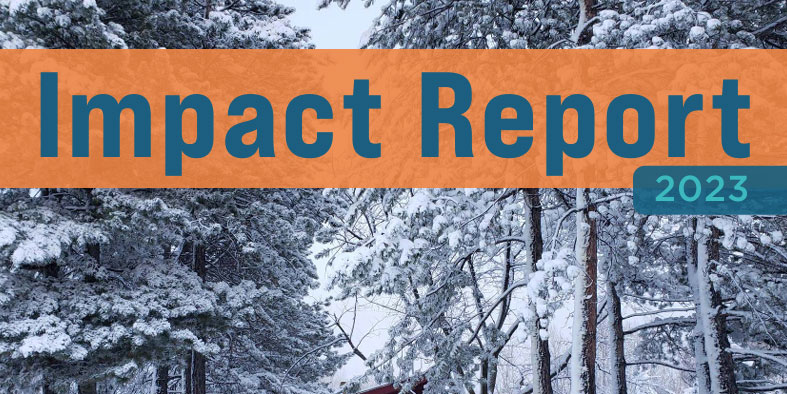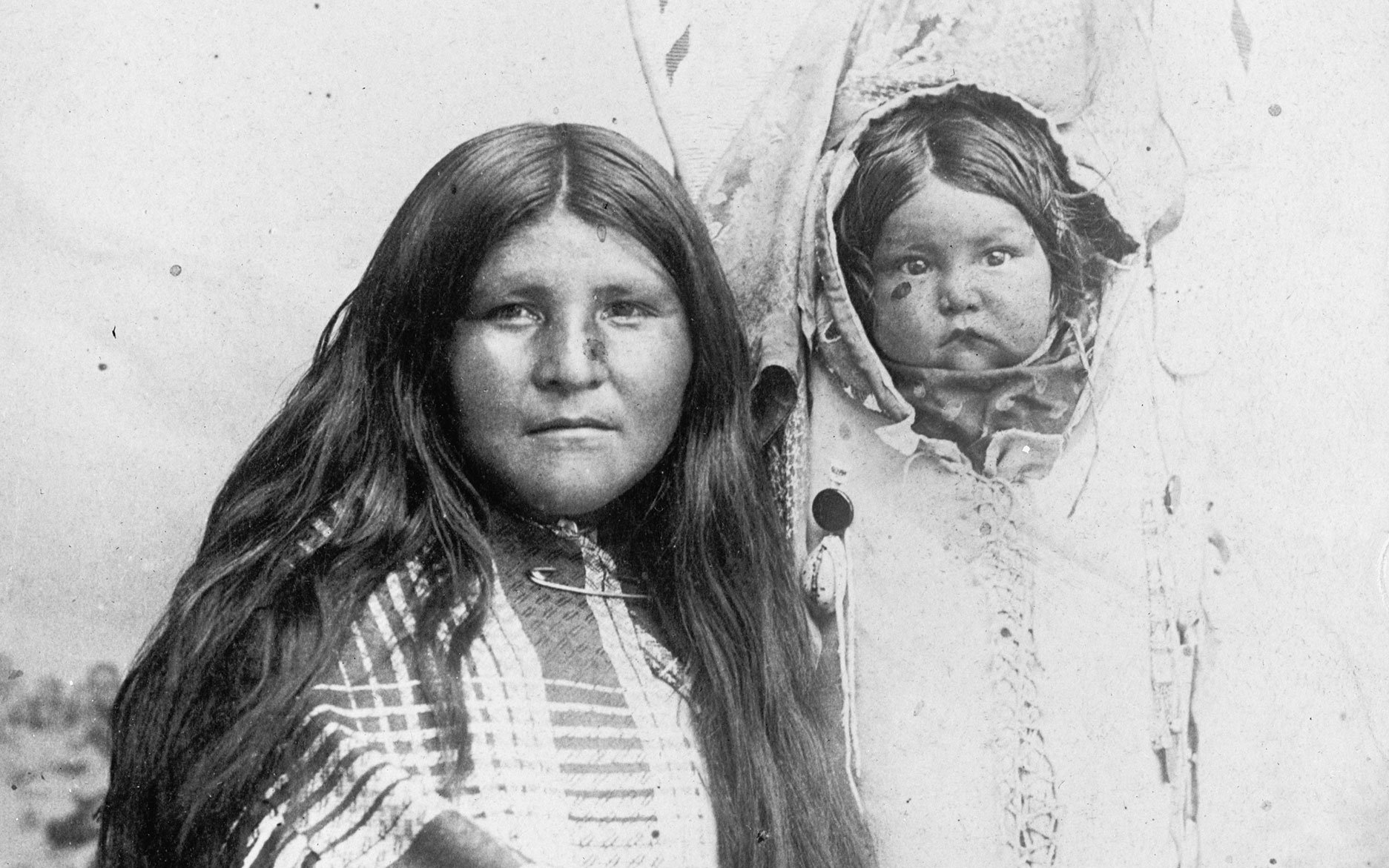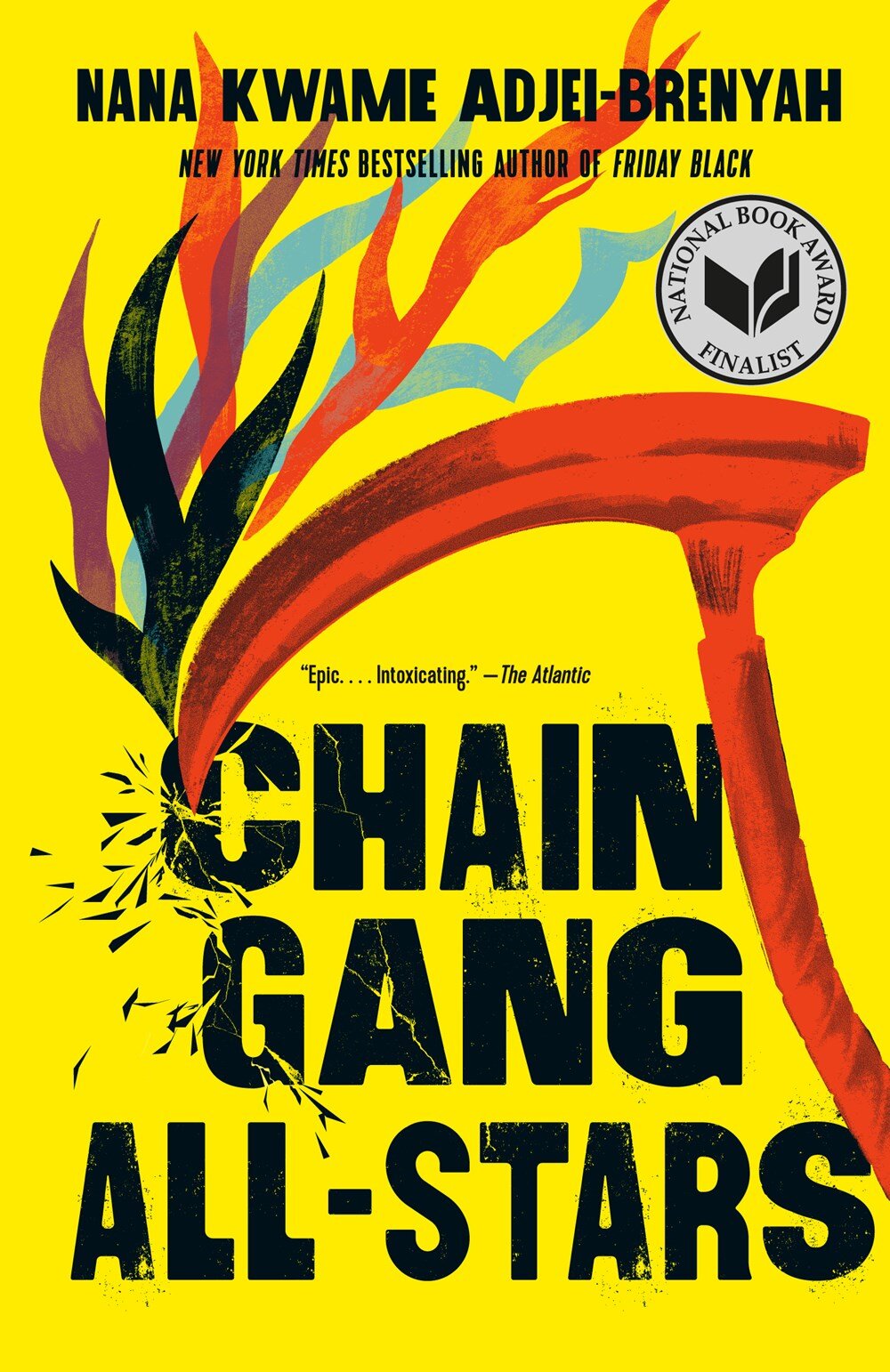Conservation & Race
This month we are celebrating the Earth and all things environmental through a variety of lenses. This article is written by contributing author Bart King and excerpted from The Conservation Issue (vol. 1.2).
John Muir (1838–1913) is one of the most famous conservationists in history. In the 1880s, his writings and work drew attention to the widespread destruction of forests in the United States. Muir also founded the Sierra Club in 1892. This important national conservation group still lobbies for the environment today.
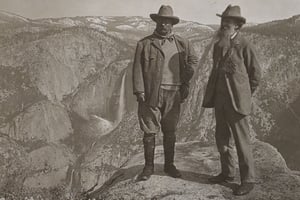
John Muir (right) is shown with President Roosevelt.
Image: Library of Congress
In 1903, President Teddy Roosevelt traveled to Yosemite, California, to camp with John Muir. It’s believed that on this visit, John Muir convinced the president to establish the US Forest Service. It set aside millions of acres of land for the public and led to the establishment of new national parks, most famously, Yosemite itself.
Yet like many Americans of his time, John Muir held ugly, racist views. His hurtful comments about Native Americans and African Americans led his own group, the Sierra Club, to apologize for Muir in 2020. Muir’s status also reveals how early American environmentalism was a white environmental movement that excluded people of color. For example, the public parks that Muir promoted for recreation and preservation were on the ancient ancestral lands of Native Americans.
However, people are complex, and so are their legacies. So how do we untangle John Muir’s legacy today? He was an unquestionably important advocate for preserving wilderness, saving vast areas of land and countless animals. Muir also inspired millions of people to care about the natural world. So maybe the question is, can we honor John Muir’s achievements without looking away from his racist views? And in a larger sense, can we acknowledge our nation’s racist past and also trace how that history shapes conservation today?
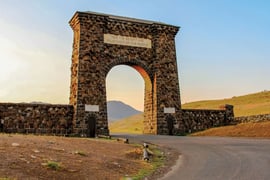
Image: David B Englund/Shutterstock.com
An Entrance and a Question
Over the north entrance to Yellowstone National Park in Montana is the phrase: “For the Benefit and Enjoyment of the People.” Those words are from the 1872 law that created the park. But at that time, women were not considered full citizens, nor were many Blacks. And Yellowstone’s parkland had been taken by force from Native Americans. So the unspoken question that Yellowstone’s arch raises is: “For which people?”
National Parks and Visitors
Today, there are 419 parks in the National Park Service that John Muir helped create. These parks are popular destinations, yet they aren’t visited by all groups of Americans. What leads a person to visit a national park? Some factors may seem like personal reasons, like whether or not a person likes being outdoors. But a personal preference like this can be based on larger social and cultural forces. For example, if you grew up with family and friends who love to go camping, you would be more likely to feel the same way.
Other things affecting whether an American visits a national park are more practical. For example, can they afford to do so? And do they have a job that allows them to take extended vacation time?

Black visitors to campgrounds and picnic areas at sites such as Shenandoah National Park might come across “For Whites Only” signs. This sign is from Lewis Mountain, Virginia.
Image: National Park Service
People of Color and Parks
When the National Park Service was created in 1916, restrictions kept African American visitors away from many hiking trails and campgrounds. They could be stopped in their tracks by a sign reading: “For Whites Only.”
In the early 20th century, racist policies of segregation made it legal to bar African Americans from many public places throughout the United States. Even in areas where Americans of color were allowed, they were sometimes segregated.
Attempts to allow people of color into parks and public areas could be met with public resistance, and sometimes even violence.
The Not-So-Great Outdoors
In 1945, the US Secretary of the Interior ordered desegregation in all national parks. But it wasn’t until the Civil Rights Act of 1964 that segregating people of color at US public recreational sites became illegal across the entire United States.
This racist history left many people of color feeling unwelcome outdoors. A modern effect of this can be seen at the Saguaro (pronounced sa-WAH- ro) National Park in southern Arizona. Located near the city of Tucson, the park is part of the Sonoran Desert and is named for the saguaro cactus. The population of people living around Saguaro National Park is 44 percent Latino. Yet until 2018, only 2 percent of the park’s visitors identified as Latino.
This trend can also be seen nationally. Surveys show that people of color are often likely to think national parks are not for them, and may even be unsafe to visit. However, people of color are likely to visit parks that respect and reflect them. For example, African Americans often visit the Booker T. Washington National Monument, which honors the great African American speaker, writer, and educator. And Asian Americans are one-third of all the visitors to the Manzanar National Historic Site. It is devoted to the internment of Japanese Americans during World War II.
Below are two problems that national parks face today. As you read about the problems, think about what steps might help to improve the situation.
Problem: People of color do not see themselves reflected at the parks and sometimes face outright discrimination.
Possible Solution: Since most park visitors have historically been white, park themes and exhibits sometimes left out the heritages of people of color. Blacks and Latinos have also reported being the victims of discrimination, ranging from inattentive park workers to being harassed by other visitors.
To help address this, President Barack Obama issued a 2017 order to promote diversity and inclusion in national parks. To “change the face of the parks,” people of color were hired to help with community outreach and increase diversity.
Saguaro National Park began cultural programs to reflect the area’s full range of visitors. New park programs were bilingual and involved people from the community. Also, a number of organizations work to encourage Americans of color to feel more comfortable about exploring the outdoors.
Problem: People have limited resources of money and time.
Visiting parks takes time, money, and transportation. The costs include lodging and meals, and in addition, some national parks charge entrance fees. So it’s not surprising that wealthy Americans are three times more likely to visit national parks than people with less money. Many lower-income Americans often do not have the means to visit national parks. Many children do not get opportunities to build an appreciation of the outdoors.
Possible Solutions: Although most national parks do not charge admission, it does cost money to maintain and protect their resources. So 117 national parks charge fees to help offset their costs.
For example, Saguaro National Park charged a $25 entrance fee for one vehicle in 2021. The pass was good for one week. The park has also had free entry on César Chávez Day. But some might ask if perhaps ALL days should be free?
Some people might argue that addressing the issue of income gaps between people is a bigger problem than national parks can address. What do you think?
Facing Facts and Climbing the Heights
The United States is fortunate to have a National Park System and an environmental movement, and that is part of John Muir’s legacy. Yet there is a racist component of US conservation, and many people believe the United States needs to face its history. Our parks need to build relationships with all Americans. It is especially important to reach out to young people of color to foster their connections to the outdoors.
After the 1964 Civil Rights Act was signed, a flight engineer named Charles Madison Crenchaw traveled to what is now Denali National Park in Alaska. There, he climbed to the top of Denali, the highest peak in North America. Crenchaw was the first African American to do so. Perhaps it was a sign that providing equal opportunities to people of color could lead to Americans reaching new heights.
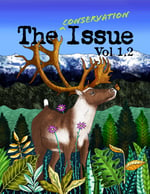 The Conservation Issue: Volume 1.2
The Conservation Issue: Volume 1.2
Conservation is a broad approach to preserving the world we share. Through conservation movements we can promote cultural awareness and protect archaeologic monuments, historic buildings, and landscapes. In this issue, students will explore the importance of protecting our past to protect our future.

